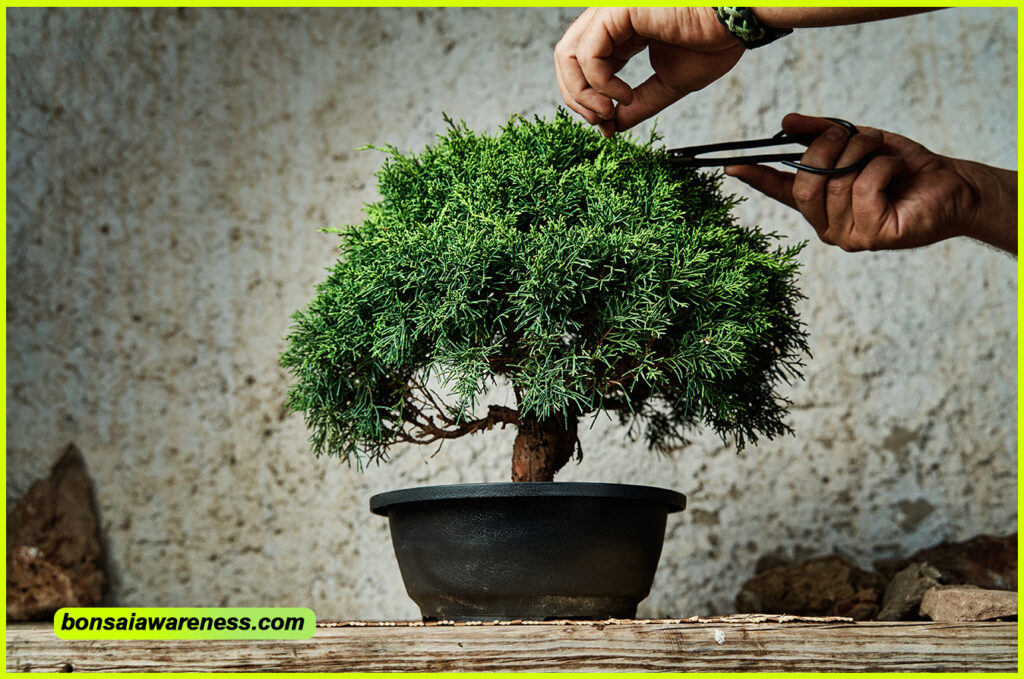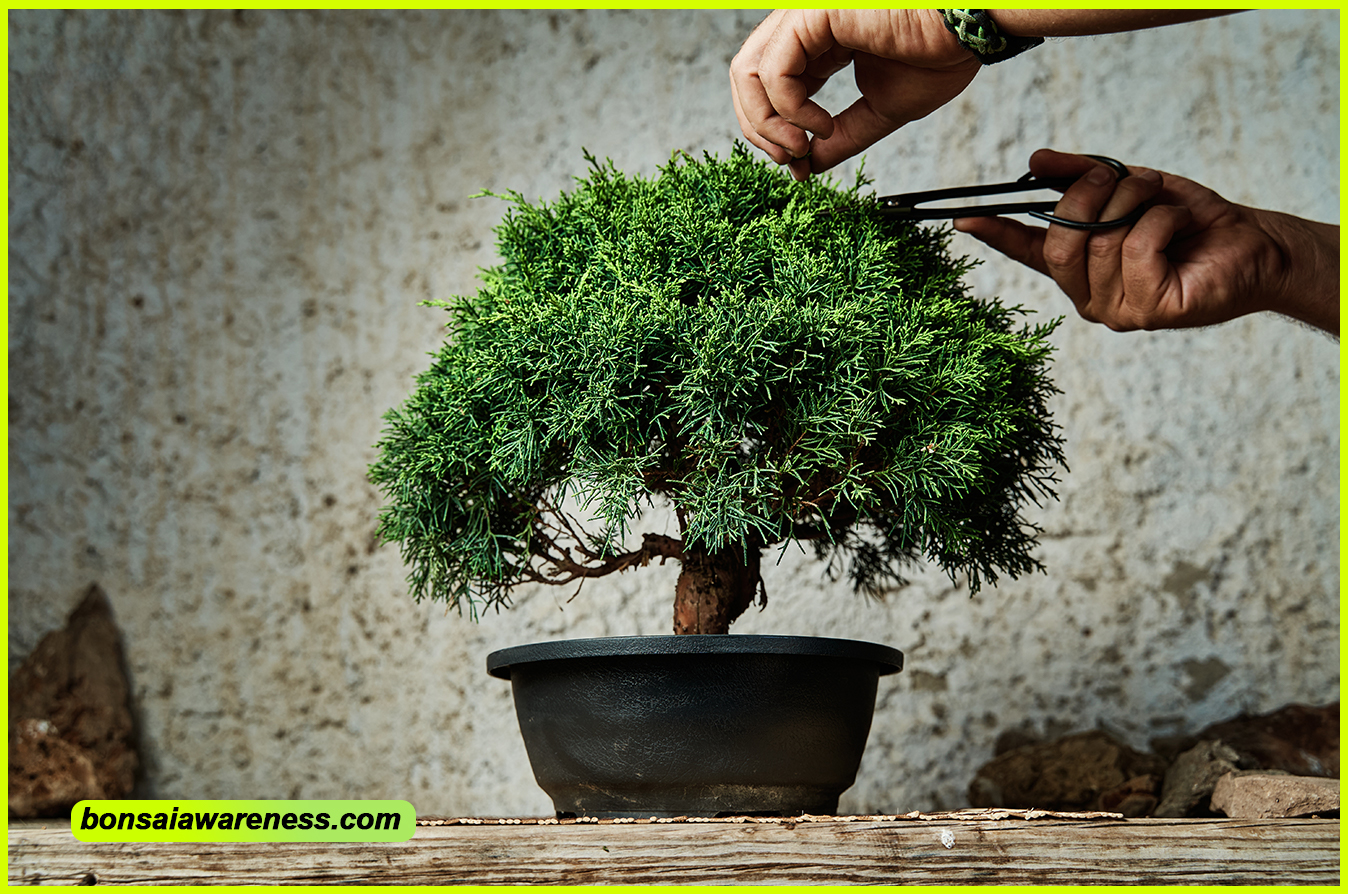To trim a bonsai tree, follow these steps:
1. Choose the right tools.
2. Define the bonsai’s style.
3. Identify branches to prune.
4. Make clean and precise cuts.
5. Create balance and harmony in the tree’s shape.
Choosing The Right Tools
Choosing the right tools is essential when it comes to trimming a bonsai tree. One of the most important tools for this task is the pruning shears. Selecting the proper pruning shears is crucial to ensure clean and precise cuts. Look for shears that have a sharp blade and a comfortable grip. It’s also important to consider the size of the shears and choose ones that are appropriate for the size of your bonsai tree.
Another tool that you should invest in is good quality bonsai trimming scissors. These scissors are specifically designed for the delicate work of trimming bonsai trees. They have a fine and sharp tip, allowing you to reach tight spaces and make precise cuts. When purchasing bonsai trimming scissors, look for ones made from high-quality materials and with a comfortable handle.
Understanding Bonsai Tree Anatomy
When caring for a bonsai tree, it’s crucial to understand its anatomy to ensure proper maintenance. By identifying the different parts of a bonsai tree, you can effectively trim it to promote healthy growth. The essential components include the trunk, branches, leaves, and roots. The trunk forms the main body and provides stability. Branches extend from the trunk, showcasing the tree’s shape and character. Leaves contribute to photosynthesis, essential for energy production. Finally, the roots anchor the tree and absorb nutrients from the soil. Moreover, to maintain its growth pattern, you must comprehend the various styles of bonsai trees such as informal upright, cascade, and windswept. Each style requires specific trimming techniques to maintain its aesthetic appeal. By acquiring a comprehensive understanding of the anatomy and growth patterns of bonsai trees, you can ensure their longevity and beauty.
Determining The Ideal Trimming Style
When trimming a bonsai tree, it is important to determine the ideal trimming style. Researching different bonsai trimming techniques can help you understand the options available. Each style has its own unique characteristics, so it is essential to choose one that complements the aesthetics of the tree. Some popular trimming styles include formal upright, informal upright, cascade, and windswept. Each style creates a distinct visual impact and conveys a different mood. For example, a formal upright style gives a sense of stability and strength, while a windswept style suggests resilience and endurance. It is crucial to consider the tree’s natural shape and growth patterns when deciding on a trimming style. By carefully studying and understanding different techniques, you can achieve the desired look for your bonsai tree.
Preparing The Tree For Trimming
Preparing the tree for trimming requires some essential steps to ensure the health and vitality of your Bonsai tree. One important step is cleaning and sterilizing the tools you will be using. This helps prevent the spread of diseases or pests that could harm the tree.
Before starting the trimming process, it’s also essential to assess the health of the Bonsai tree. Look for any signs of disease, like yellowing leaves or spots, and address any issues before proceeding. Inspecting the roots for signs of root rot or compactness is crucial for the overall health of the tree as well.
Executing The Trimming Process
When trimming a bonsai tree, it is important to follow the right process. One of the key steps is to remove any dead or diseased branches. These branches can hinder the health and growth of the tree, so it’s essential to get rid of them. In addition, pruning overgrown areas is necessary to maintain the desired shape and size of the bonsai. This involves carefully cutting back branches and leaves that have become too long or dense. Shaping the tree is another crucial aspect of the trimming process. This is done by pruning and wiring the branches to achieve the desired form. It requires careful consideration and patience to create a visually appealing bonsai tree.
Frequently Asked Questions Of How To Trim A Bonsai Tree

How Often Should I Trim A Bonsai Tree?
The frequency of trimming a bonsai tree depends on the specific tree species and its growth rate. Generally, pruning should be done once or twice a year to maintain the desired shape and promote healthy growth.
What Tools Do I Need To Trim A Bonsai Tree?
To trim a bonsai tree, you will need a pair of sharp pruning scissors or shears, wire cutters, concave cutters, knob cutters, and branch benders. These tools are essential for shaping and maintaining the bonsai tree’s form.
How Do I Trim The Branches And Leaves Of A Bonsai Tree?
When trimming the branches and leaves of a bonsai tree, use sharp scissors or shears to carefully remove any dead, damaged, or unwanted foliage. Trim the branches in a way that maintains the desired shape and encourages new growth.
Can I Trim The Roots Of A Bonsai Tree?
Yes, trimming the roots of a bonsai tree is an essential part of its maintenance. When repotting, carefully remove a portion of the roots while ensuring that the root ball stays intact. This helps prevent root-bound issues and promotes better nutrient absorption.
Conclusion
Trimming a bonsai tree is a delicate process that requires patience and skill. By following the steps outlined in this blog post, you can ensure that your bonsai tree remains healthy and beautiful. Remember to prune with care, using the right tools and techniques for each specific tree species.
Regular maintenance and attention to detail will help you achieve the desired shape and overall aesthetics of your bonsai. Happy trimming!



Leave a Reply